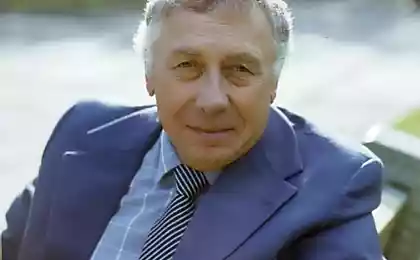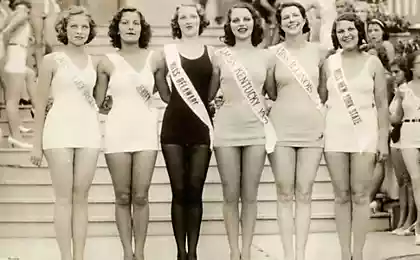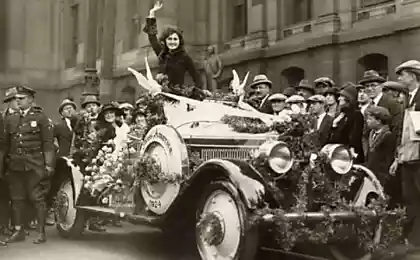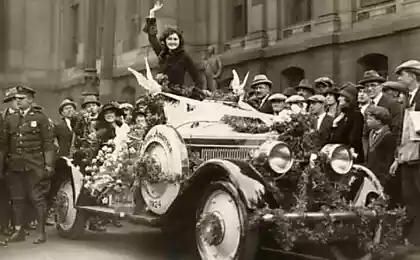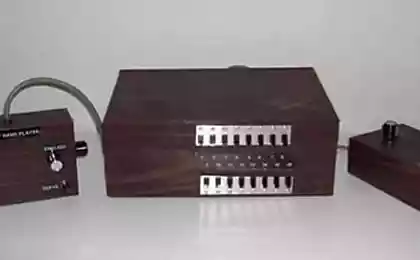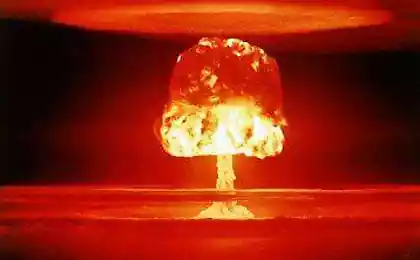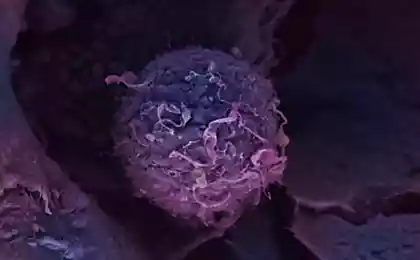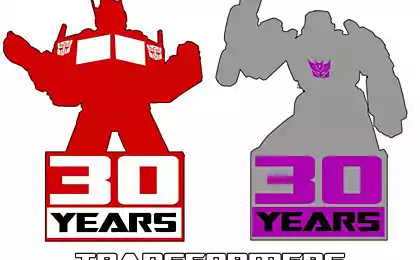1318
Documentary America 1971-1977
In the gallery of the Lawrence F. O'Brien at the National Archives in Washington, DC, an exhibition
Documentary photos of the project America. This project is formed of the environmental movement decades
and includes photographs of many environmental problems and achievements in the era of the '70s.
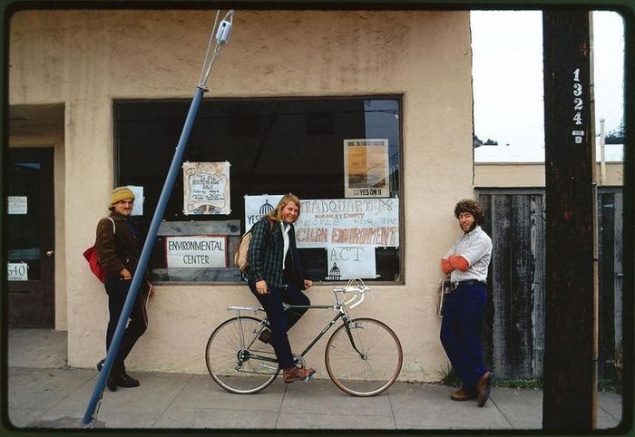
"A cyclist in front of the ecological center". Thomas Sennett, Humboldt County, California, in May 1972.
"A black youth playing basketball in the park at Steytuey skyscrapers on the South Side of Chicago. The complex consists of eight buildings from 1633 and two-bedroom apartments, which are home to 6,825 people. They were built in the framework of the US housing reform in 1949 and 1968. High-rise buildings are the responsibility of the administration of property of Chicago, which is responsible for 41,500 public housing apartments. " John H. White, Chicago, IL, May 1973.
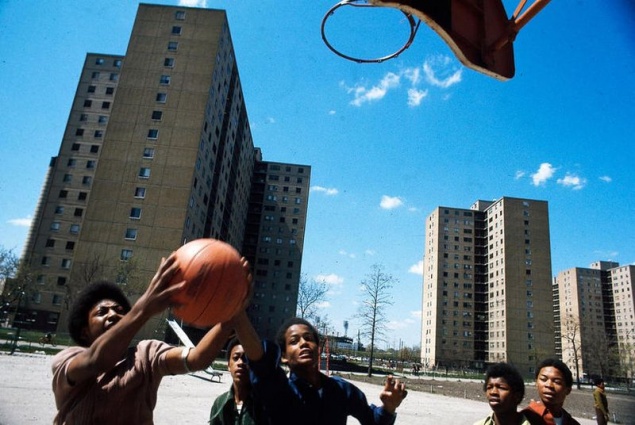
"Builder Navajo power plant. When completed it will be the largest plant in Arizona. " Lint Scott Eiler, Page, Arizona, May 1972.
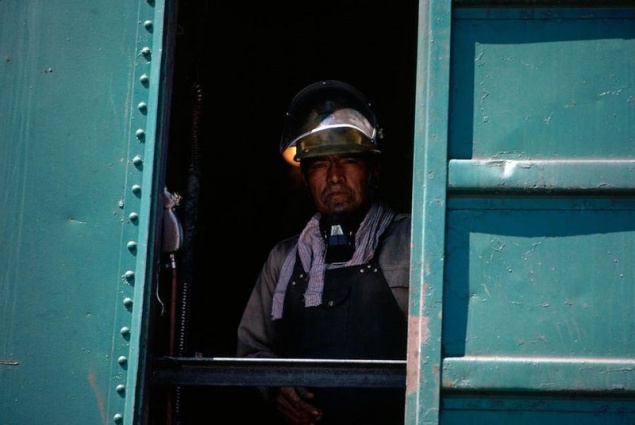
"Cooling tower power generating John Amos Power overshadow home town of Poca, West Virginia, who is on the other side of the river Kanavha. Two towers produced huge clouds of steam. " Harry Schaefer, Poca, West Virginia, in August 1973.
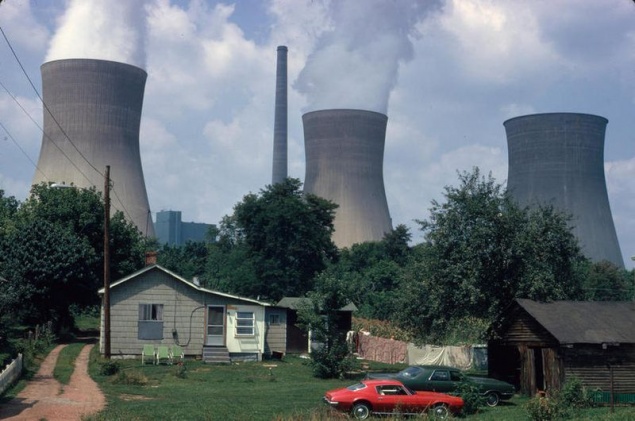
"Mr. and Mrs. Berry Howard Cumberland, Kentucky, and the new truck, which they had just bought, adding the funds paid for harmful working conditions. He left the mine a few years ago. The disease led to the filling of the light particles of coal dust, so that developed progressive shortness of breath. " Jack Korn, Cumberland, Kentucky, in October 1974.
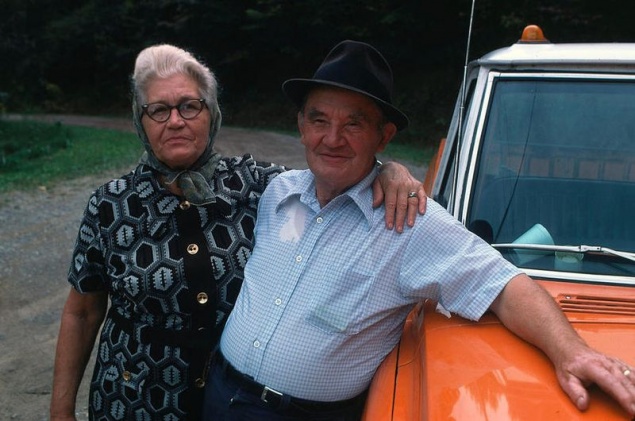
"Abandoned cars and other units in the decaying chemical waste engine oil, and the size of the lake is 20 square kilometers. It has been removed under the supervision of the EPA for the prevention of possible contamination of the Great Salt Lake Nature Reserve, located near ". Bruce McAllister, near Ogden, Utah, in April 1974.
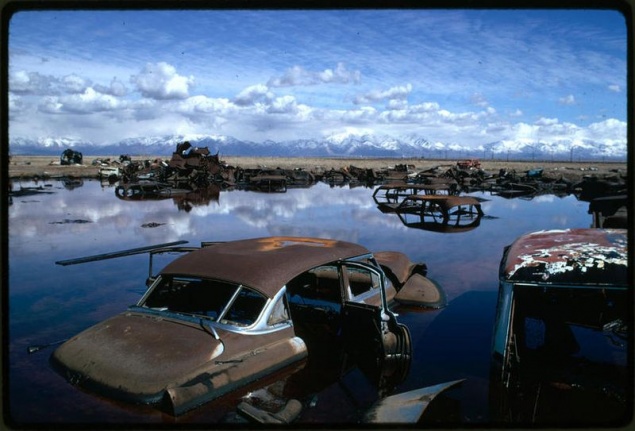
"Mary Workman holds a jar of undrinkable water, which comes from its wells. She filed a lawsuit for compensation for damage caused by the coal company Hanna. She has to carry water from the well is suitable, located many kilometers from her home. Although all the areas around the coal bought by the company and many roads blocked, she refuses to sell his land. " Eric Kalonius, near Styubenvillya, Ohio, in October 1973.
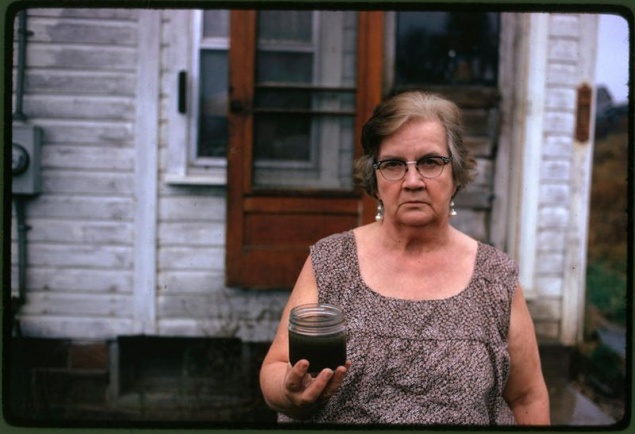
"The residential area surrounding the plant for the production of steel, the United States." Leroy Woodson, Birmingham, Alabama, in July 1972.
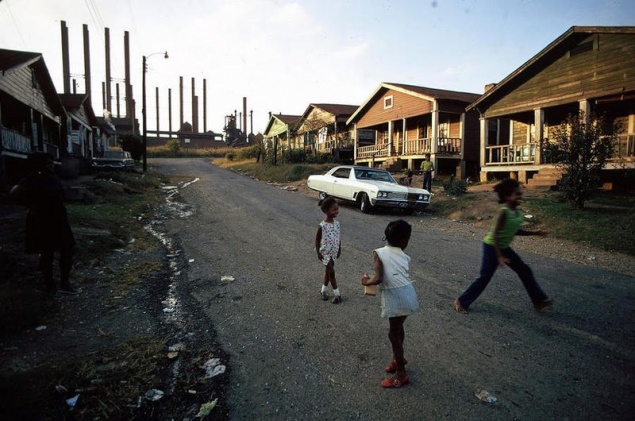
"Teenager in the second district of the city of El Paso. The classic "slums", which gradually give way to urban renewal. " Danny Lyon, El Paso, Texas, in May 1972.
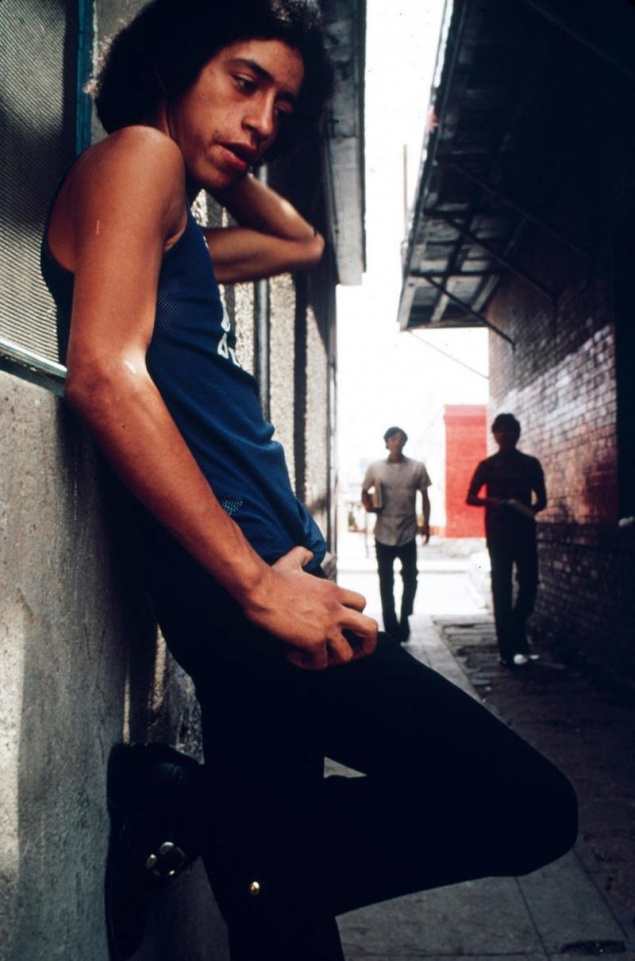
"Stanton Street in the second district, Hispanic quarter." Danny Lyon, El Paso, Texas, in June 1972.
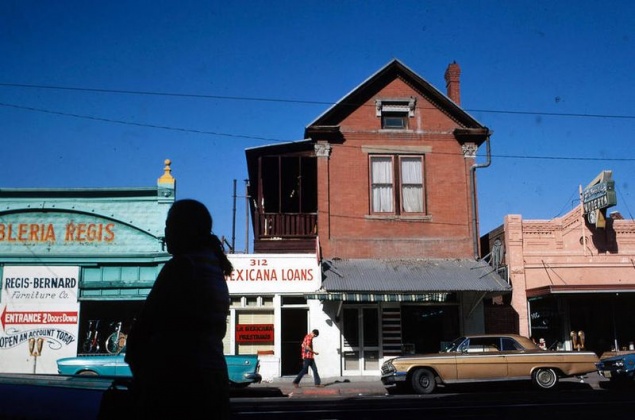
"Sheltered in dust storm." Terry Eiler, Arizona, May 1972.
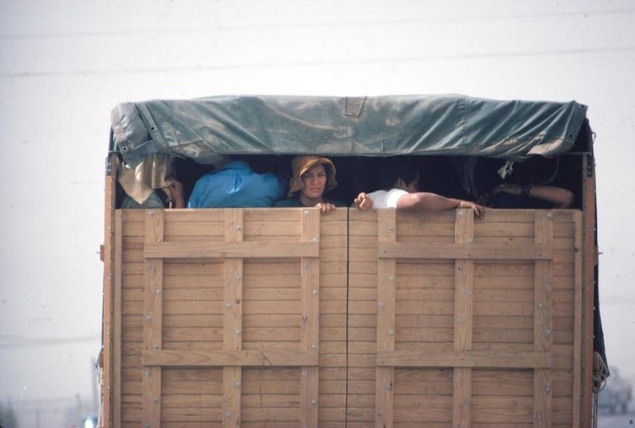
"Arizona - representatives of the Navajo." Terry Eiler, in May 1972.
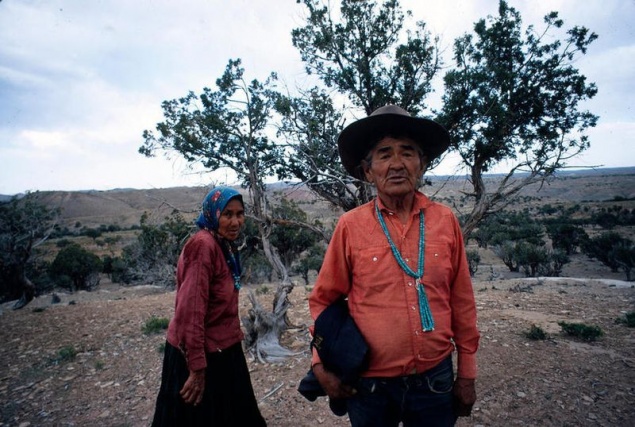
"Abandoned gas stations during the fuel crisis in the winter of 1973-74 were sometimes used for other purposes. This station is in Potlatch, Washington, west of Olympia was turned into a hall of religious meetings. Signs painted on the gas pumps, proclaim "Fill the Holy Spirit" and "Fill salvation." David Falconer, Potlatch, Washington, DC, in April 1974.
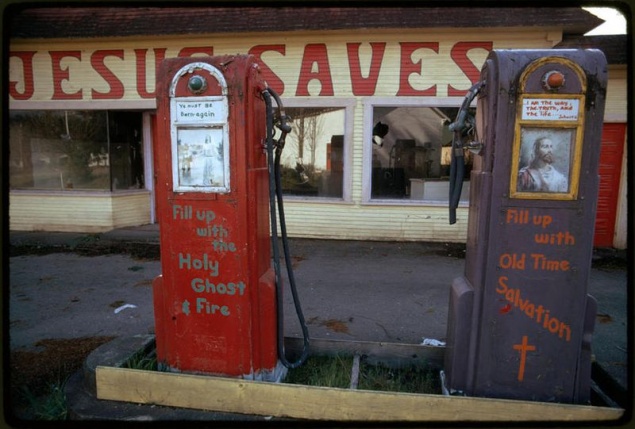
"The lack of fuel in the country has led to problems in the search for car gasoline, as well as large overpaid for it and as a result fuel thefts from cars. This father and son, they made the sign for thieves, warning of the possible consequences. " David Falconer, Portland, Oregon, in April 1974.
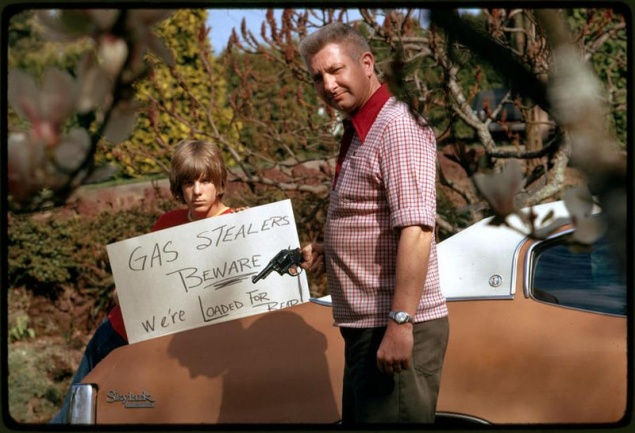
"Industrial could overshadows the house adjacent to the North Birmingham plant for the production of pipes. This is the most polluted areas of the city. " Leroy Woodson, Birmingham, Alabama, in July 1972.
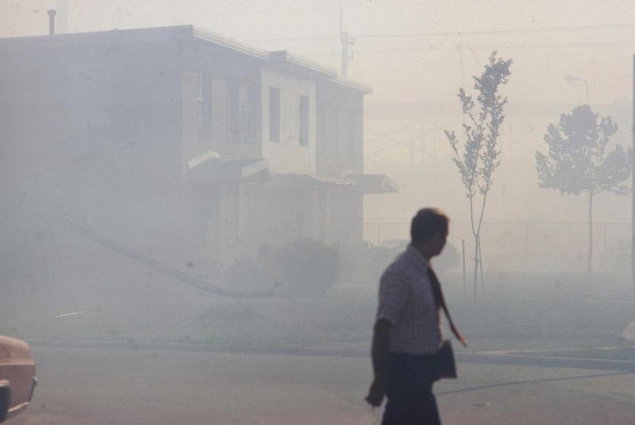
«U.S. Pipe Co, Birmingham. Closed EPA. View from 1st Avenue North overpass. The plant, now owned by the city of Birmingham can be turned into a museum. " Al Stevenson, Birmingham, Alabama, in June 1977.

"The religious fervor is reflected on the face of a black Muslim woman, one of the 10,000 students of Elijah Muhammad, conducting prayers at its annual Savior's Day in Chicago. The town is a haven for "Black Muslims". The organization has a fund of $ 75 million and includes a mosque, newspapers, universities, restaurants, real estate, banks and a variety of retail stores. Muhammad died on February 25, 1975 ". John H. White, Chicago, Illinois, March 1974.
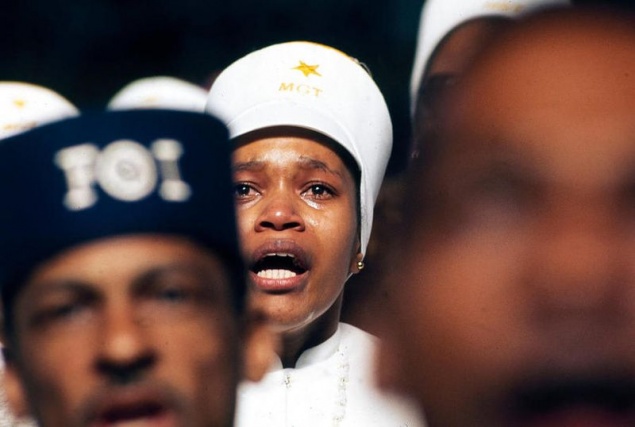
"Black products were one of the topics at the annual Black held in Chicago. It was also lit black education, voter registration and other aspects of black consciousness. The goal is to make the black more aware and give them the opportunity to change lives for the better. " John H. White, Chicago, Illinois, in October 1973.
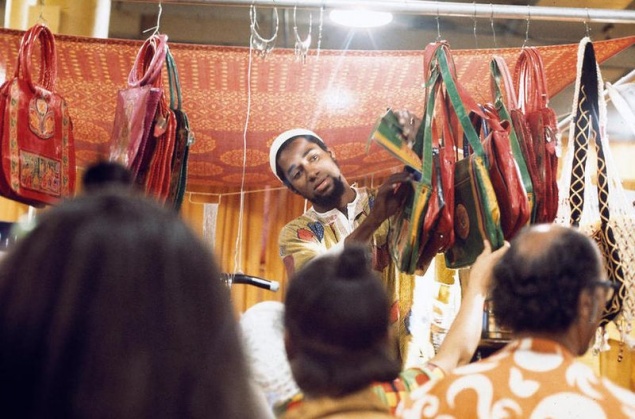
"A young woman raises funds for the organization of Chicago in the parking lot of shopping center. She is one of 1.2 million black people, who make up more than a third of the population of Chicago. This is one of many black representatives in this project, which depicts life in all its aspects. Photos reflect pride, love, beauty, hope, struggle, joy, hatred, frustration, resentment, worship and faith. She is a representative of her race, which is proud of its heritage. " John H. White, Chicago, Illinois, in August 1973.
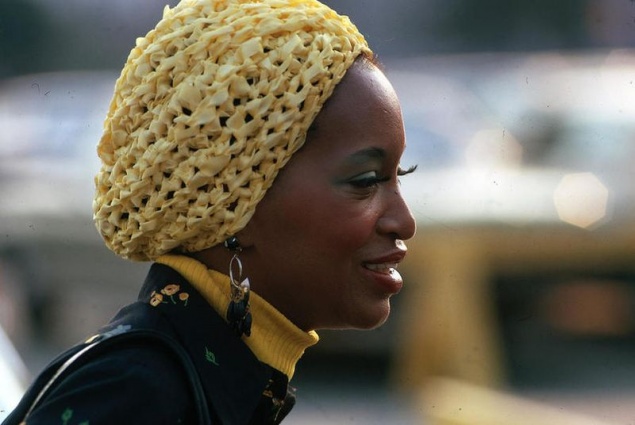
"Black youth pours from a fire hydrant on the South Side of Chicago in the Woodlawn neighborhood. Children, instead of walking at the beach, use the fire hydrants to cool. This habit is inherent in society of people with very low incomes. The area has a high crime and fire hazards. From 1960 to 1970, the percentage of black Chicago with an income over 7000 and jumped from 26% to 58%. " John H. White, Chicago, Illinois, in June 1973.
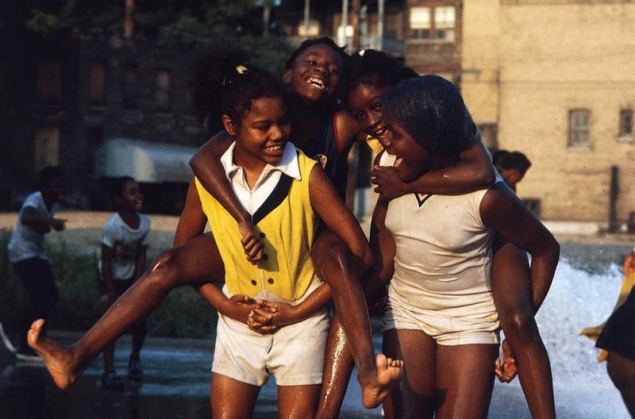
Source: www.archives.gov
Documentary photos of the project America. This project is formed of the environmental movement decades
and includes photographs of many environmental problems and achievements in the era of the '70s.

"A cyclist in front of the ecological center". Thomas Sennett, Humboldt County, California, in May 1972.
"A black youth playing basketball in the park at Steytuey skyscrapers on the South Side of Chicago. The complex consists of eight buildings from 1633 and two-bedroom apartments, which are home to 6,825 people. They were built in the framework of the US housing reform in 1949 and 1968. High-rise buildings are the responsibility of the administration of property of Chicago, which is responsible for 41,500 public housing apartments. " John H. White, Chicago, IL, May 1973.

"Builder Navajo power plant. When completed it will be the largest plant in Arizona. " Lint Scott Eiler, Page, Arizona, May 1972.

"Cooling tower power generating John Amos Power overshadow home town of Poca, West Virginia, who is on the other side of the river Kanavha. Two towers produced huge clouds of steam. " Harry Schaefer, Poca, West Virginia, in August 1973.

"Mr. and Mrs. Berry Howard Cumberland, Kentucky, and the new truck, which they had just bought, adding the funds paid for harmful working conditions. He left the mine a few years ago. The disease led to the filling of the light particles of coal dust, so that developed progressive shortness of breath. " Jack Korn, Cumberland, Kentucky, in October 1974.

"Abandoned cars and other units in the decaying chemical waste engine oil, and the size of the lake is 20 square kilometers. It has been removed under the supervision of the EPA for the prevention of possible contamination of the Great Salt Lake Nature Reserve, located near ". Bruce McAllister, near Ogden, Utah, in April 1974.

"Mary Workman holds a jar of undrinkable water, which comes from its wells. She filed a lawsuit for compensation for damage caused by the coal company Hanna. She has to carry water from the well is suitable, located many kilometers from her home. Although all the areas around the coal bought by the company and many roads blocked, she refuses to sell his land. " Eric Kalonius, near Styubenvillya, Ohio, in October 1973.

"The residential area surrounding the plant for the production of steel, the United States." Leroy Woodson, Birmingham, Alabama, in July 1972.

"Teenager in the second district of the city of El Paso. The classic "slums", which gradually give way to urban renewal. " Danny Lyon, El Paso, Texas, in May 1972.

"Stanton Street in the second district, Hispanic quarter." Danny Lyon, El Paso, Texas, in June 1972.

"Sheltered in dust storm." Terry Eiler, Arizona, May 1972.

"Arizona - representatives of the Navajo." Terry Eiler, in May 1972.

"Abandoned gas stations during the fuel crisis in the winter of 1973-74 were sometimes used for other purposes. This station is in Potlatch, Washington, west of Olympia was turned into a hall of religious meetings. Signs painted on the gas pumps, proclaim "Fill the Holy Spirit" and "Fill salvation." David Falconer, Potlatch, Washington, DC, in April 1974.

"The lack of fuel in the country has led to problems in the search for car gasoline, as well as large overpaid for it and as a result fuel thefts from cars. This father and son, they made the sign for thieves, warning of the possible consequences. " David Falconer, Portland, Oregon, in April 1974.

"Industrial could overshadows the house adjacent to the North Birmingham plant for the production of pipes. This is the most polluted areas of the city. " Leroy Woodson, Birmingham, Alabama, in July 1972.

«U.S. Pipe Co, Birmingham. Closed EPA. View from 1st Avenue North overpass. The plant, now owned by the city of Birmingham can be turned into a museum. " Al Stevenson, Birmingham, Alabama, in June 1977.

"The religious fervor is reflected on the face of a black Muslim woman, one of the 10,000 students of Elijah Muhammad, conducting prayers at its annual Savior's Day in Chicago. The town is a haven for "Black Muslims". The organization has a fund of $ 75 million and includes a mosque, newspapers, universities, restaurants, real estate, banks and a variety of retail stores. Muhammad died on February 25, 1975 ". John H. White, Chicago, Illinois, March 1974.

"Black products were one of the topics at the annual Black held in Chicago. It was also lit black education, voter registration and other aspects of black consciousness. The goal is to make the black more aware and give them the opportunity to change lives for the better. " John H. White, Chicago, Illinois, in October 1973.

"A young woman raises funds for the organization of Chicago in the parking lot of shopping center. She is one of 1.2 million black people, who make up more than a third of the population of Chicago. This is one of many black representatives in this project, which depicts life in all its aspects. Photos reflect pride, love, beauty, hope, struggle, joy, hatred, frustration, resentment, worship and faith. She is a representative of her race, which is proud of its heritage. " John H. White, Chicago, Illinois, in August 1973.

"Black youth pours from a fire hydrant on the South Side of Chicago in the Woodlawn neighborhood. Children, instead of walking at the beach, use the fire hydrants to cool. This habit is inherent in society of people with very low incomes. The area has a high crime and fire hazards. From 1960 to 1970, the percentage of black Chicago with an income over 7000 and jumped from 26% to 58%. " John H. White, Chicago, Illinois, in June 1973.

Source: www.archives.gov




